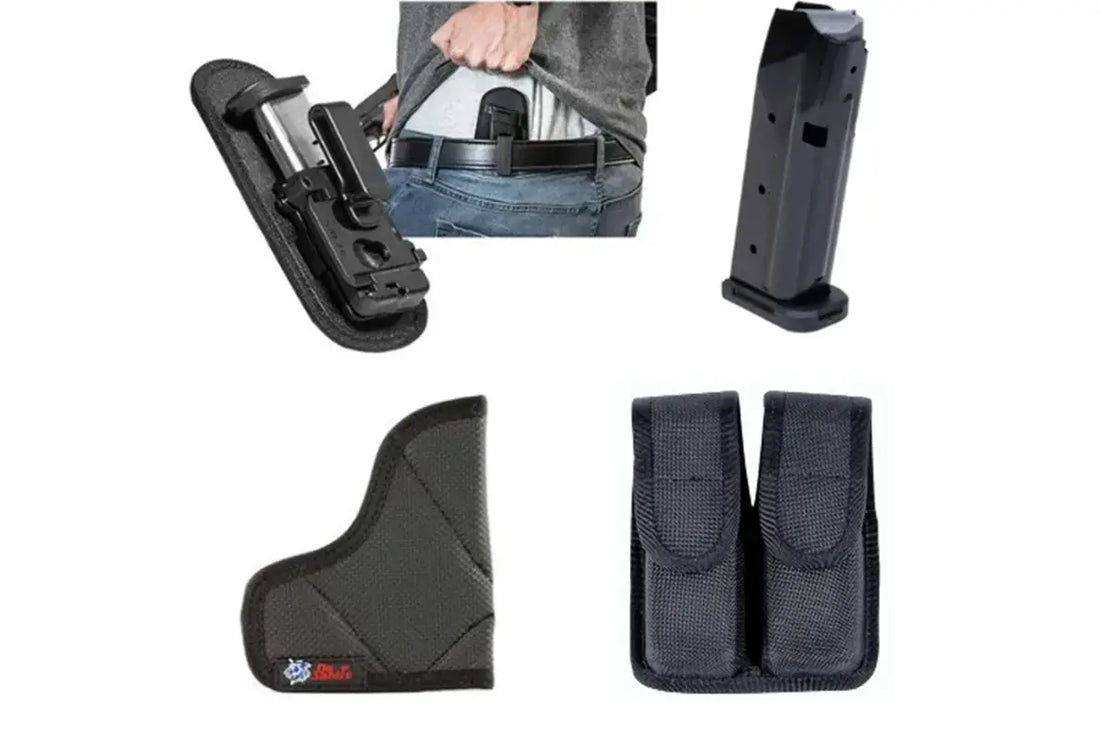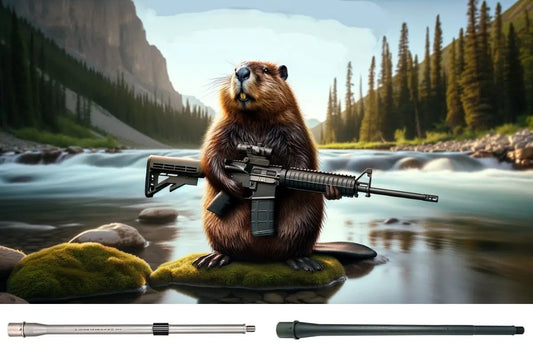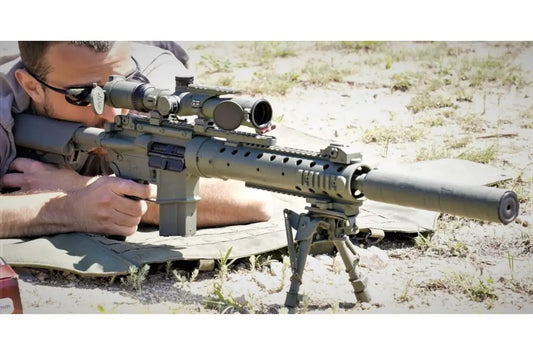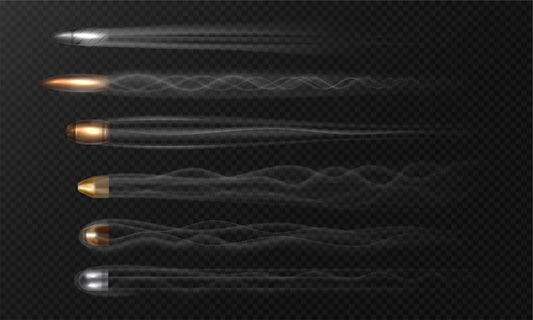
Capacity vs. Confidence: Finding Your Concealed-Carry Round Count (and Whether a Spare Mag Really Matters)
|
Carry Philosophy |
Typical On-Board Capacity |
Flagship Examples |
Biggest Pros |
Key Cons / Trade-Offs |
Spare Magazine? |
|
“Five For Sure” snub-nose revolver |
5–6 rounds (.38 Spl) |
S&W 642 Pro, Kimber K6s DAO |
Ultra-reliable, simple manual of arms, shoots through pockets |
Lowest capacity, slowest reloads, DAO pull harder to master |
Yes – Bianchi Speed Strip fits flat |
|
Slim single-stack 9 mm |
7–8 (+1) |
Glock 43, Springfield 911 9 mm |
Very thin profile for deep concealment; light |
Limited ammo, brisk recoil, longish reload cycle |
Often – one 8-rd spare balances the trade |
|
Micro double-stack 9 mm |
10–13 (+1) |
SIG P365 XMacro 17-rd, Springfield Hellcat Pro 15-rd |
“CCW capacity revolution” in a pocketable length; optics-ready |
Snappier than compacts; capacity still mid-range |
Depends – carry a flush+2 extension or a 17-rd spare |
|
Classic compact double-stack |
15–17 (+1) |
Glock 19 Gen5 MOS, Walther PDP Compact, HK VP9SK 15-rd |
Goldilocks blend of shootability and concealment; huge aftermarket |
Slight printing with light clothing; heavier |
Optional – one 17-rd spare cures malfunctions |
|
Duty/full-size “concealed only under a coat” |
17–20 (+1) |
Staccato C2 20-rd, SIG P320 XCarry Legion 17-rd |
Soft recoil, red-dot ready, night-sight radius |
Hardest to hide; weight all-day |
Usually No – 18–20 in gun is plenty unless you expect barricade fight |
|
“New York reload” (second gun) |
+5–15 rounds |
Ruger LCP MAX 12-rd in pocket |
Instant “reload”, redundancy if main gun dies |
Extra gun = extra weight, legal complexity |
Spare mag or spare gun—pick one to stay comfortable |
“No gun-fight survivor has ever said, ‘I wish I’d brought less ammunition.’” – widely attributed to Massad Ayoob
Concealed carriers fixate on caliber debates, holster angles, and the perfect Kydex—but nothing sparks more quarrels on the range than magazine capacity. Do you really need 15-plus rounds in the gun…or will five well-placed shots solve almost any civilian problem? And should you burn belt real-estate on a spare magazine—or trust the rounds already in the pistol?
Below you’ll find a brutal, no-nonsense framework for deciding:
- The real-world data on how many shots citizen defenders actually fire
- The engineering limits that make some guns more (or less) trustworthy with fewer rounds
- Why a spare magazine isn’t mostly about capacity at all
- Contrarian solutions—mag extensions, a pocket “New York reload,” and even ditching the spare in favor of OC spray
We’ll finish with a punch-list you can apply to your own EDC tonight.
The hard numbers—and the uncomfortable outliers
- FBI & USCCA case reviews put the average defensive volley at three shots at three yards.
- Tom Givens’s Rangemaster database (70-plus private citizen gunfights) shows zero students who ran completely dry—yet 12 % experienced magazine-related malfunctions.
- Active Self Protection’s John Correia (50,000+ video analyses) reports never seeing a private citizen reload under fire. -USCCA Community
What those stats don’t tell you
- Averages hide tails. You may need one round or all sixteen, depending on whether the threat is a lone mugger, an armed robbery crew, or a pit-bull pack at dusk.
- Malfunction math. Modern double-stack magazines are statistically the weakest link. A spare mag instantly solves a feed-lip crack, spring failure, or “Chicago over-stuff” stoppage—problems ammo in the chamber alone cannot fix.
Opinionated takeaway: For the typical urban gunfight you’re unlikely to empty a modern 10-to-15-round pistol. But if Murphy’s Law visits, three extra ounces of loaded metal could save the day—or at least let you top off before police arrive.
Capacity classes in 2025
Five-shot snubs—the reliability purists
Why pick them:
- Will fire after years in a lint-filled ankle holster
- Can stay hidden in ultra-restrictive wardrobe or a jogging pocket
Why ditch them:
- Reloading under stress is fantasy-land without moon-clips
- Trigger control on 12-lb DAO pull takes 1,000 dry-fire reps to master
Spare-mag analog: At minimum, carry a 6-rd Bianchi Strip or a JetLoader.
Slim single-stack 9 mm—the summer classics
Products worth the cash-outlay:
- Glock 43X MOS with Shield Arms S15 metal magazines (15 + 1) — Japanese-grade machining, dead-reliable
- Springfield 911 for .380 aficionados wanting 1911 ergonomics
Pros/cons: Ultra-thin; but with 7–8 rounds in stock mag you’re one fumbled tap-rack away from slide-lock panic.
Micro double-stacks—the capacity revolution
The SIG P365 family flipped the market in 2018; five years later every serious maker offers a 12-to-17-round micro. Springfield Hellcat Pro (15 + 1) and Smith & Wesson Shield Plus (13 + 1) sit at the sweet spot between G19 shootability and G43 concealability.
- Add-on tip: $40 base-plate extensions (+2) let you skip a spare mag while keeping the pistol flush for deep cover.
- Contrarian view: Muzzle flip is snappier—hand-size and training matter more than raw capacity.
Compact workhorses—the default recommendation
Glock 19 Gen5 MOS remains the “Corolla of pistols.” Want premium fit? Walther PDP Compact with dynamic trigger or HK VP9SK if you prize Teutonic QC. At 15–17 rounds they ride comfortably AIWB with a Tier 1 Concealed Axis Elite sidecar, giving you both gun and spare in one Kydex footprint.
Duty/full-size—the coat-weather cannons
Carrying a Staccato C2 (20-round mags, 2011 trigger) or SIG XFive? You probably are the armed professional. Real talk: with 18+ rounds in the gun a spare magazine offers diminishing returns—unless you run a red-dot that might require battery-pull “simulated malfunctions” training.
The spare magazine debate—capacity vs. contingency
|
Argument |
Pro-Spare View |
Anti-Spare View |
|
Raw round count |
Multiple attackers, barricaded or vehicular gunfights can burn ammo fast. |
Average DGU ends after 3–4 rounds; extra is dead weight. |
|
Malfunction out |
Swap-mag clears 90 % of feed-lip or spring failures instantaneously. |
Quality mags + maintenance make catastrophic mag failure a fringe event. |
|
After-fight top-off |
Gives you a full gun while waiting for law enforcement. |
Administrative reload can come from glovebox stash instead. |
|
Concealment cost |
Sidecar rigs now integrate seamlessly. |
Adds bulk; uncomfortable in summer; may break concealment law. |
Tom Givens sums it up: “If you need your gun for self-defense, you may or may not shoot it at all, but you will have to get it out. Everything else is secondary.”
Even Givens—no capacity obsessive—still tells students to tote one spare if practical, because it is the fastest mechanical fix for a dead magazine. -USCCA Community
John Correia’s data point
Correia has yet to catalog a civilian on video who executed an emergency reload. -USCCA Community That’s compelling—yet every failure-to-feed clip he annotates ends with “tap-rack”—the spare remains a “get-out-of-jail card” if tap-rack fails.
Our call: carry a spare if (a) your gun holds under 12 rounds, or (b) you can do so with negligible comfort penalty. Otherwise, you’re trading six ounces for a lot of real-world convenience.
Smart spare-mag solutions (that won’t wreck your wardrobe)
- NeoMag Type G—disappears in a front pocket, held upright by a rare-earth magnet.
- Raven Concealment Pocket Shield—turns any loose-pocket cargo pants into an instant mag holster.
- Vedder MagTuck IWB—Kydex, thin, 30-degree cant for appendix comfort.
- Tier 1 Concealed Axis Elite—industry-benchmark sidecar; add SIG P365 or Glock 19 variant and one spare mag; hinge flexes with your waist.
- Phlster Enigma—if you run weird athletic clothes, the Enigma chassis anchors the mag to its belt shell under gym shorts.
Alternative: the “New York Reload”
A pocket Ruger LCP MAX (12 + 1) weighs 10 oz loaded—lighter than some empty Glock mags. A second gun gives faster fight-stoppage than any reload. Downside: legal red-tape in some jurisdictions and another serial number to explain during police interviews.
Factors to audit before finalizing your number
- Threat model:
- Urban convenience-store clerk? Expect multiple-attacker robberies.
- Suburban dog-walker? Animal attacks and car-jackings—capacity matters less than speed.
- Wardrobe vs. climate: Rocky-Mountain summers demand micro 9 mm + pocket mag; heavy coats allow compact with sidecar.
- Skill level: A USPSA “A-class” shooter with a J-frame outperforms the newbie with a 20-round blaster. Capacity masks poor marksmanship—until it doesn’t.
- Hand size / recoil tolerance: Many shooters miss faster with ultra-small guns. If your pinkie dangles in space, bump to the longer P365 XL or Glock 48.
- Local magazine limits: Ten-round states mandate either a spare mag or mag extensions (Shield Arms makes 15-rd steel mags that disappear in a Glock 48).
Contrarian (and future-leaning) ideas
- Smart compensators like the Parker Mountain Machine P365 comp tame micro recoil; you might shoot better with 12 rounds than 18 un-comped.
- Hybrid metal-poly mags (e.g., SIG’s polymer-over-steel magazines) promise double-digit reliability with less weight—making the spare even lighter in 2026 models.
- Co-witnessed pistol-mounted lights with integrated 5-round spare (Streamlight’s R&D rumor mill) could merge illumination and ammo into one belt slot.
Decision checklist—run it tonight
- Count the real estate. Can you add a NeoMag or sidecar without “printing”?
- Test malfunctions. Load a dummy round to induce double-feed; if clearing requires dumping the mag, you need a spare on hand.
- Run the 12-second drill. From concealment, fire six rounds, reload (or “New York reload”), fire six more. If you beat 12 s consistently, your setup is realistic.
- Dress-rehearse errands. Wear your full kit through a grocery run and kid pick-up; if it remains comfortable, it’s sustainable.
- Audit every quarter. Capacity needs shift with new laws, stimulants (red-dot adoption), or seasonal clothing.
The bottom-line answer
- 10–15 rounds in the gun hits the sweet spot for 90 % of armed citizens—enough for rare multiple-attacker events yet slim enough to carry daily.
- Carry one spare magazine if your primary holds under 12, if you rely on single-stack or revolver, or if you simply value a mechanical malpractice-insurance policy.
- Skip the spare only when wardrobe or deep concealment makes it too costly—but offset that choice with flawless mag maintenance, high-round-count practice, and perhaps a pocket OC spray or backup mini-pistol.
In short, capacity is confidence—but only if you can actually hide the gun, deploy it fast, and shoot it well. Solve those first. Then let the round count—and any spare magazine—serve as icing, not crutches.
Shop a wide selection of guns, ammo, and accessories ➞ Brownells.com




